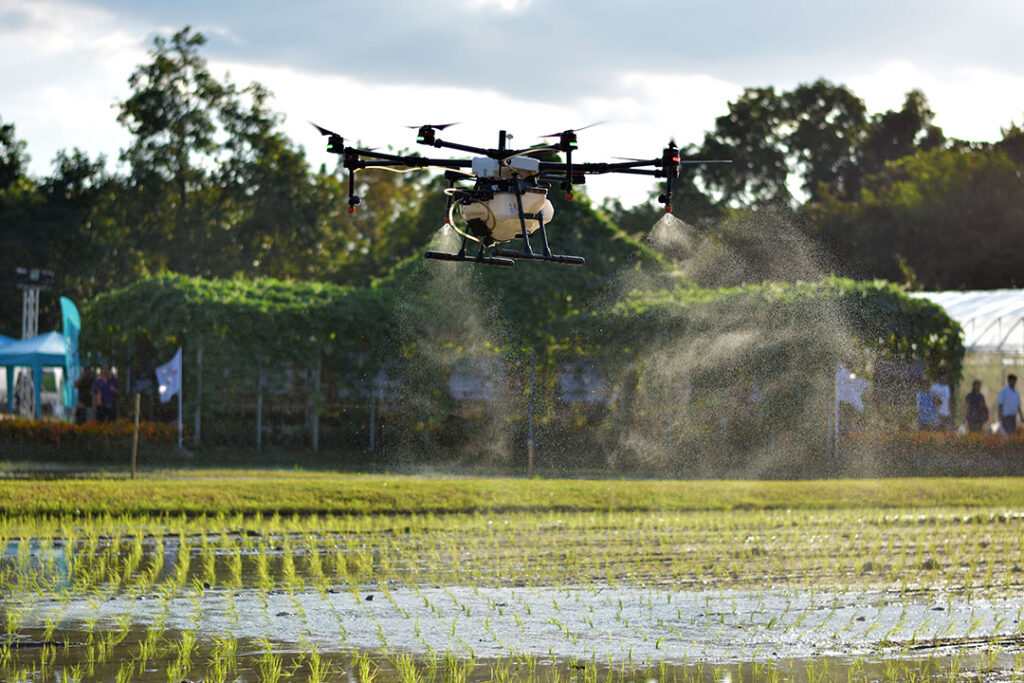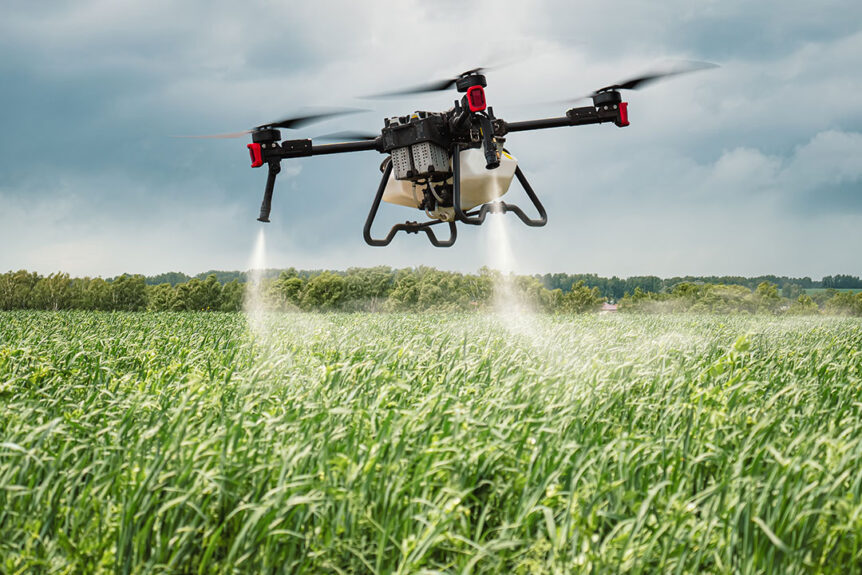Navigating the complex world of pesticide regulations is essential for applicators to ensure compliance, safety, and environmental protection. This guide provides a detailed overview of federal laws governing pesticide use, including FIFRA, FQPA, and ESA, to help applicators stay informed and compliant.
The Importance of Complying with Pesticide Regulations
Pesticides are vital for pest control, but their use comes with risks to human health and the environment. To mitigate these risks, the U.S. has established a robust regulatory framework, primarily governed by the Federal Insecticide, Fungicide, and Rodenticide Act (FIFRA) and the Federal Food, Drug, and Cosmetic Act (FFDCA), as amended by the Food Quality Protection Act (FQPA) of 1996. These laws, administered by the Environmental Protection Agency (EPA), ensure that pesticides are used safely while minimizing risks.

Helicopter flying low to begin pesticide spraying
Understanding FIFRA: The Foundation of Pesticide Regulations
FIFRA is the cornerstone of pesticide regulations, governing every stage of a pesticide’s lifecycle—from production and registration to use and disposal. Key responsibilities of the EPA under FIFRA include:
- Registering pesticides to ensure they pose no unreasonable risks when used as directed.
- Enforcing compliance with federal standards to protect public health and the environment.
Pesticide Classification: Restricted Use vs. General Use
Pesticides are classified based on their potential hazards. Restricted-use pesticides (RUPs) are highly toxic or environmentally impactful and can only be applied by certified applicators. General-use pesticides, while less hazardous, are still regulated to ensure safe handling.
The Pesticide Registration Process
Before a pesticide can be sold or distributed, it must undergo a rigorous EPA registration process. This involves a thorough risk assessment to evaluate its effects on human health and the environment. The process determines whether a pesticide is classified as restricted use, general use, or remains unclassified.

Drone spraying pesticide
The Food Quality Protection Act (FQPA): Enhancing Safety Standards
The FQPA introduced stricter standards for pesticides used on food, emphasizing the protection of vulnerable populations like infants and children. It mandates a “reasonable certainty of no harm” standard for pesticide residues in food, considering cumulative exposure risks.
Protecting Endangered Species: The Role of the ESA
The Endangered Species Act (ESA) prohibits actions that could harm endangered or threatened species, including pesticide application. The EPA must ensure that registered pesticides do not jeopardize these species, and applicators must follow specific guidelines in sensitive areas.
Recordkeeping and Training: Pillars of Compliance
Accurate recordkeeping and comprehensive training are essential for compliance. Applicators must maintain detailed records of pesticide applications and ensure that workers receive safety training as mandated by the Worker Protection Standard (WPS).
Key Provisions of FIFRA
FIFRA’s Section 2(ee) allows certain flexibility in pesticide use, but applicators assume full responsibility for any consequences. The EPA also has the authority to impose penalties for misuse, stop the sale of non-compliant pesticides, and reevaluate older pesticides to ensure they meet current safety standards.

Helicopter spraying pesticide
Certification for Handling Restricted-Use Pesticides
Handling RUPs requires certification, ensuring applicators have the knowledge and skills to use these chemicals safely. Certification helps balance safety with practicality, avoiding stricter controls or the cancellation of beneficial pesticides.
Tolerances and Safety Assessments
The EPA sets tolerances for pesticide residues in food, ensuring they do not exceed safe levels. These tolerances are based on extensive scientific studies that consider potential health risks, application rates, and residue levels in food products.
Reregistration and Tolerance Reassessment
The EPA’s reregistration program reevaluates older pesticides to ensure they meet current safety standards. The FQPA also mandated the reassessment of existing tolerances to align with updated safety criteria.
Ongoing Evaluation: The Registration Review Program
The EPA’s registration review program ensures that all registered pesticides continue to meet safety standards as scientific methods and risk assessments evolve.

Agriculture Helicopter spraying pesticide
Implications for Applicators
Applicators must stay informed about changes in pesticide labeling and regulations to ensure compliance and avoid misuse.
Violations and Penalties
FIFRA outlines various unlawful acts, including distributing unregistered pesticides and using pesticides inconsistently with labeling. Penalties can range from civil fines to criminal charges.
Other Federal Laws Impacting Pesticide Use
In addition to FIFRA, other laws like the FFDCA, ESA, and regulations governing transportation, storage, and disposal play a role in pesticide regulations.
Why Compliance Matters
Understanding and adhering to pesticide regulations is not just a legal obligation—it’s a commitment to safety, environmental protection, and professional responsibility. The Federal Laws and Regulations for Pesticide Applicators Core Manual is an essential resource for staying compliant.
